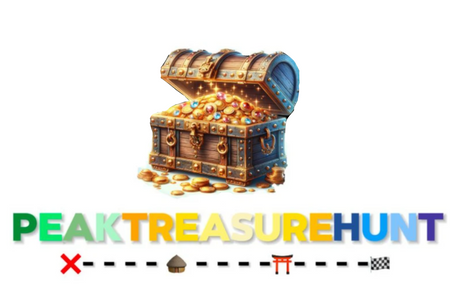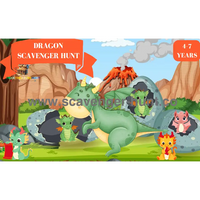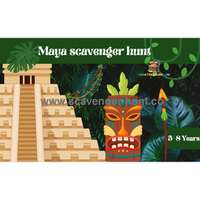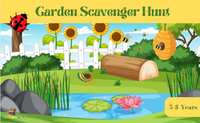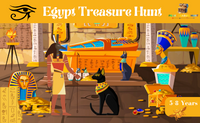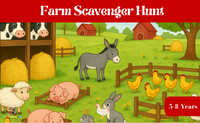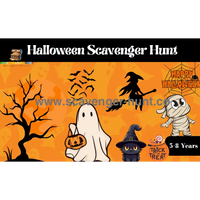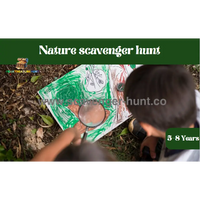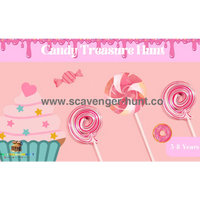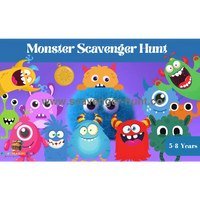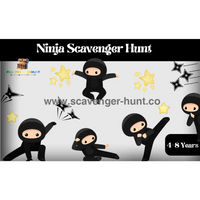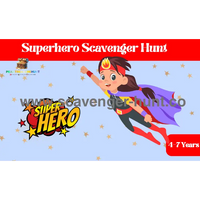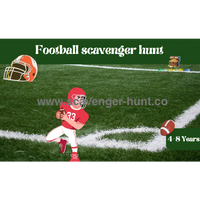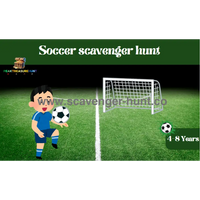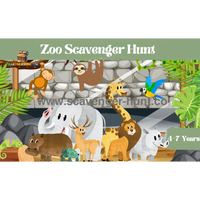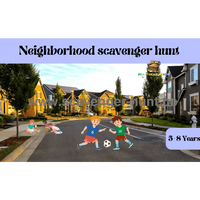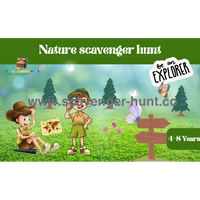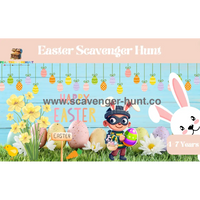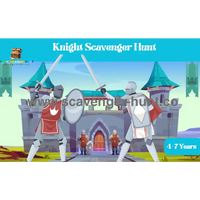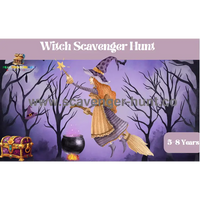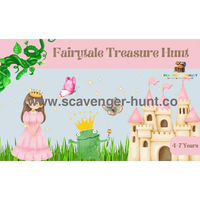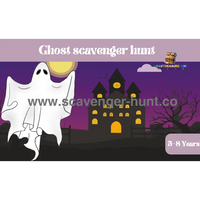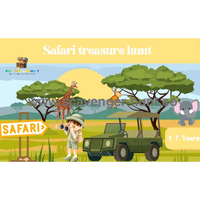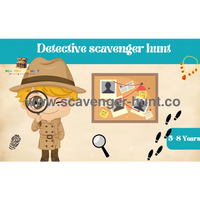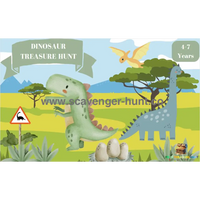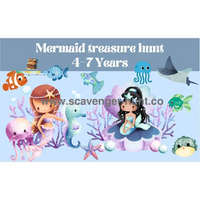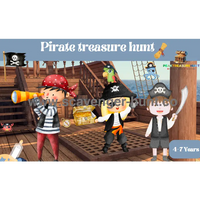Outdoor scavenger hunts are a fantastic way to keep kids engaged, active, and learning while they have fun. Whether you’re planning a birthday party, a playdate, or just a weekend activity, a well-organized scavenger hunt can be the highlight of the day. Here’s a comprehensive guide to planning and executing four different types of outdoor scavenger hunts for kids, along with answers to some frequently asked questions.
What Is a Scavenger Hunt?
A scavenger hunt is a game in which players or teams are given a list of specific items or tasks to find and complete within a certain timeframe. The goal is to gather all the items or finish all the tasks before time runs out. Scavenger hunts can take place indoors, outdoors, or even online, and they can be tailored to any age group or setting, making them versatile and enjoyable for everyone involved.
Follow These Basic Steps for a Successful Scavenger Hunt
Choose a Theme
Selecting a theme for your scavenger hunt can greatly enhance the overall experience, making it more engaging and cohesive. Themes provide a narrative or context that can make the hunt more exciting and immersive for participants. Some popular themes include:
-
Pirates: Use a pirate map and look for buried treasure.
-
Nature: Focus on finding natural items like leaves, rocks, and flowers.
-
Adventure: Create a quest that includes physical challenges like climbing and crawling.
-
Mystery: Solve a series of clues to uncover a mystery or secret.
-
Holiday: Align the scavenger hunt with holidays like Easter, Halloween, or Christmas.
Create a List
Developing a list of items to find or tasks to complete is the heart of any scavenger hunt. The list should be challenging but achievable and tailored to the age and interests of the participants. For younger children, include simple and recognizable items. For older kids, you can incorporate more complex tasks or riddles. Here are some examples:
-
Physical Objects: A red leaf, a smooth stone, a feather.
-
Tasks: Take a photo with a statue, draw a picture of a flower, find something that smells good.
-
Riddles: "I’m not alive, but I grow; I don’t have lungs, but I need air; I don’t have a mouth, and I can drown. What am I?" (Answer: A plant)
Set Boundaries
Defining the area where the hunt will take place is crucial for safety and manageability. The size of the area should depend on the age of the participants and the complexity of the hunt. For younger children, a backyard or small park is ideal. For older kids, you can expand the area to include a larger park, a neighborhood, or even multiple locations. Ensure the area is safe and free from hazards.
Establish Rules
Clear rules help ensure the scavenger hunt runs smoothly and safely. Some basic rules might include:
-
Time Limits: Set a specific time frame for the hunt.
-
Team Size: Define how many people can be on each team.
-
Proof of Find: Specify how participants should document their finds (e.g., photos, collecting items, marking off a checklist).
-
Respect for Nature and Property: Remind participants to respect nature and not to disturb plants or animals, and to avoid trespassing on private property.
Gather Supplies
Make sure participants have everything they need to successfully complete the scavenger hunt. Depending on the theme and list, supplies might include:
-
Bags or Baskets: For collecting items.
-
Notepads and Pens: For jotting down notes or drawing.
-
Cameras or Smartphones: For taking photos.
-
Maps: If the hunt involves finding specific locations.
-
Clue Cards: If the hunt includes riddle-solving.
Plan for Safety
Safety should always be a top priority, especially if children are involved. Here are some tips to ensure a safe scavenger hunt:
-
Supervision: Have enough adults to supervise the children and assist if necessary.
-
Check-in Points: Establish check-in points where participants can regroup and ensure everyone is accounted for.
-
Emergency Plan: Have a plan in place for handling emergencies, such as a lost child or injury. Ensure all supervisors have a way to communicate, such as cell phones or walkie-talkies.
-
First Aid Kit: Keep a first aid kit on hand for minor injuries.
With these steps in mind, let’s dive into some creative outdoor scavenger hunt ideas that will provide endless fun and excitement for kids.


1. Easy Outdoor Scavenger Hunt
An easy outdoor scavenger hunt is perfect for younger children or first-time hunters. The focus is on simple, easily recognizable items that are fun to find. This type of hunt helps to build observation skills and introduces kids to the joys of exploring the outdoors.
Planning the Hunt
Items to Include:
- A smooth stone
- A red leaf
- A feather
- A dandelion
- A piece of bark
Instructions:
-
Create a Simple List: Use pictures along with words to help younger children understand what they’re looking for. Visual aids can be particularly helpful for pre-readers. You can create a printable list with images of each item, or even laminate the lists to make them more durable for outdoor use.
-
Define a Safe Area: Keep the hunt confined to a small, safe area like a backyard or a local park. Ensure that the area is free of hazards and easily accessible for adults who need to supervise. Mark the boundaries clearly so the children know where they can and cannot go.
-
Set a Time Limit: Give them plenty of time to find all the items without feeling rushed. A relaxed pace ensures that the children can enjoy the process of searching and exploring. Typically, 30 minutes to an hour is sufficient for young children.
Tips for Success
-
Supervision: Always have adults nearby to supervise and assist if needed. Depending on the number of children, you may need several adults to ensure safety and to help guide the children if they have trouble finding certain items.
-
Encouragement: Offer lots of positive reinforcement and celebrate each discovery. Compliment the children on their finds and make a big deal out of each item they check off their list. This helps build their confidence and makes the activity more enjoyable.
-
Interactive Elements: Introduce interactive elements such as asking the children to describe the items they find or to guess why certain items are in the environment. For example, you could ask why different leaves have different colors or textures.
Benefits of an Easy Outdoor Scavenger Hunt
-
Engages Young Minds: By keeping the tasks simple and straightforward, you can engage young children without overwhelming them. This kind of scavenger hunt stimulates curiosity and observational skills.
-
Encourages Exploration: An easy scavenger hunt encourages children to explore their surroundings and learn about nature in a hands-on way. This can foster a lifelong appreciation for the outdoors.
-
Builds Social Skills: When done in a group setting, scavenger hunts can help children develop social skills such as cooperation, sharing, and communication. They learn to work together and help each other find the items.
An easy outdoor scavenger hunt is a great way to introduce kids to the joy of exploring nature and completing challenges. It provides a structured yet flexible activity that can be adapted to various settings and group sizes. By focusing on easily recognizable items and providing plenty of encouragement, you can ensure that the children have a fun and rewarding experience. This type of hunt is a wonderful way to engage young minds, encourage physical activity, and create lasting memories.
2. Educational Outdoor Scavenger Hunt
Ideas for Outdoor Scavenger Hunts
When planning outdoor scavenger hunts, consider incorporating a variety of themes and challenges to keep the kids engaged and excited. Here are some additional ideas to inspire you:
Seasonal Scavenger Hunts
Spring:
-
Blooming Flowers: Identify different types of flowers that are blooming.
-
Baby Animals: Look for signs of baby animals or nests where they might be found.
-
Fresh Green Leaves: Find new leaves that have recently sprouted.
Summer:
-
Seashells: If you're near a beach, collect different types of seashells.
-
Butterflies: Observe and identify various species of butterflies.
-
Colorful Fruits: Find and identify summer fruits growing in gardens or farms.
Autumn:
-
Colored Leaves: Collect leaves of different colors and shapes.
-
Pinecones: Search for pinecones of various sizes.
-
Acorns: Gather acorns and learn about the trees they come from.
Winter:
-
Animal Tracks: Look for and identify animal tracks in the snow.
-
Evergreen Branches: Find different types of evergreen branches.
-
Icicles: Search for icicles and observe their shapes and sizes.
Themed Scavenger Hunts
Nature:
-
Rocks: Collect rocks of different shapes, sizes, and colors.
-
Sticks: Find sticks and use them to create simple structures or designs.
-
Plants: Identify various plants and learn about their uses or characteristics.
Wildlife:
-
Animal Signs: Look for nests, footprints, feathers, and other signs of animals.
-
Bird Watching: Identify different species of birds and note their behaviors.
-
Insect Hunt: Find and observe different types of insects in their natural habitats.
Adventure:
-
Treasure Map: Create a map with clues leading to a hidden treasure or trinket.
-
Obstacle Course: Incorporate physical challenges like climbing, crawling, and jumping.
-
Secret Codes: Use codes or ciphers that the kids must solve to find the next clue.
Benefits of Diverse Scavenger Hunt Themes
-
Engagement: Different themes keep the hunt fresh and exciting, ensuring that kids remain interested and engaged throughout the activity.
-
Learning Opportunities: Each theme offers unique learning opportunities, from understanding seasonal changes in nature to recognizing animal behaviors.
-
Physical Activity: Scavenger hunts encourage physical movement and exploration, promoting a healthy lifestyle.
-
Creativity: Themed hunts allow for creative expression, whether through designing a treasure map or solving riddles and puzzles.
Tips for Successful Scavenger Hunts
-
Preparation: Plan your scavenger hunt in advance, considering the age group and interests of the participants.
-
Flexibility: Be flexible and ready to adapt the hunt based on the kids' reactions and the environment.
-
Safety First: Always prioritize safety, especially in unfamiliar or potentially hazardous areas.
By incorporating a variety of themes and seasonal elements, you can create outdoor scavenger hunts that are not only fun and exciting but also educational and enriching. Whether you choose a nature, wildlife, or adventure theme, each hunt offers unique opportunities for children to learn, explore, and enjoy the great outdoors. These ideas will help you plan a memorable scavenger hunt that kids will love and remember for years to come.
3. Photography Outdoor Scavenger Hunt
A photography scavenger hunt adds a creative twist, encouraging kids to capture their findings with a camera or smartphone. This activity not only engages them in a fun and interactive way but also helps them develop basic photography skills and a new perspective on their surroundings.
Planning the Hunt
Items to Include:
- A unique cloud shape
- A bug on a flower
- A bird in flight
- A reflection in water
- A funny face in nature (like a tree knot that looks like a face)
Instructions:
-
Provide Cameras: If possible, provide kids with disposable cameras or let them use smartphones under supervision. Ensure that the devices are easy to use and explain how to handle them carefully to avoid damage. If you have access to digital cameras, consider using them for better quality photos.
-
Create a Photo List: List items or scenes they need to photograph. This list can be a mix of specific objects and broader themes to encourage creativity. For example, you can include items like "a close-up of a flower" or "a picture of something red in nature." Make sure the list is suitable for the age group and experience level of the participants.
-
Explain Basic Photography: Teach kids simple tips for taking good photos, like focusing and framing. Explain the importance of steady hands to avoid blurry pictures, using natural light effectively, and experimenting with different angles to get interesting shots. Briefly cover the rule of thirds to help them frame their photos better.
Tips for Success
-
Safety First: Ensure kids understand not to wander too far and to stay in safe areas. Set clear boundaries for where they can go and ensure they know to stay within sight of an adult. Use buddy systems to make sure no one is left alone.
-
Encourage Creativity: Let kids interpret the items creatively and capture interesting perspectives. Encourage them to think outside the box and find unique ways to photograph the items on their list. Praise their creativity and unique interpretations to boost their confidence.
Photo Scavenger Hunt 101
A photo scavenger hunt is an excellent way to engage kids in a fun activity that also teaches them valuable skills. Here’s why it works so well:
-
Enhances Observation Skills: Kids learn to pay close attention to their surroundings as they search for specific items to photograph. This helps them notice details they might otherwise overlook.
-
Builds Technical Skills: Even simple tips on photography can help children learn how to use technology more effectively. They gain hands-on experience with cameras and smartphones, which can be useful in many aspects of their lives.
-
Encourages Creativity: Photography allows for a lot of creative expression. Kids can experiment with different angles, lighting, and compositions to capture their subjects in unique ways.
-
Provides Keepsakes: At the end of the hunt, the kids will have a collection of photos that they can keep as memories of the day. These photos can be printed and made into a scrapbook or a photo album, giving them a tangible reminder of their adventure.
A photography outdoor scavenger hunt not only engages kids in a fun activity but also helps them develop basic photography skills and a new way of observing their surroundings. By providing cameras, creating a thoughtful list, and encouraging creativity, you can organize a memorable and educational experience. This type of scavenger hunt offers a unique blend of technology, creativity, and nature exploration, making it a perfect choice for kids of all ages. Whether for a party, a school event, or a family outing, a photography scavenger hunt will provide lasting memories and beautiful pictures that children will cherish.


4. Outdoor Treasure Scavenger Hunt
An outdoor treasure scavenger hunt is a more elaborate and thrilling version of a traditional scavenger hunt, perfect for birthdays or special occasions. This type of hunt adds an element of adventure and excitement as kids work together to follow clues and discover hidden treasures.
Planning the Hunt
Items to Include:
-
Treasure Maps: Design detailed maps that guide participants from one clue location to the next.
-
Hidden Clues: Craft clues that lead to various spots within the designated area.
-
Small Treasures or Tokens: Place small rewards or tokens at each clue location, culminating in a final big treasure.
Instructions:
-
Create a Treasure Map: Design a map that leads to various clue locations and ultimately the final treasure. You can make the map look aged by soaking it in tea and burning the edges slightly for an authentic pirate feel. Ensure the map is clear and easy to follow, with distinct markers for each clue location.
-
Hide Clues and Treasures: Place clues in creative spots around the chosen area. Each clue should lead to the next, with small treasures or tokens hidden along the way. These can be simple items like stickers, coins, or small toys that fit the theme of the hunt.
-
Provide Final Treasure: The final treasure should be something exciting and worth the hunt. A treasure chest filled with goodies, toys, themed prizes, or even a special birthday gift works well. Decorate the chest to make it look enticing and hide it in a spot that provides a satisfying conclusion to the hunt.
Tips for Success
-
Team Effort: Divide kids into teams to encourage cooperation and teamwork. This can make the hunt more competitive and fun, especially if you have a large group. Provide each team with their own map and clues or have them work together on a single quest.
-
Costumes and Props: Enhance the experience by encouraging kids to dress up according to the theme. Pirate hats, spyglasses, and bandanas can add to the adventure and make the event more immersive. Props like treasure chests, old-looking keys, and fake gold coins can also make the hunt more exciting.
Create Your Own Scavenger Hunt
Creating your own scavenger hunt allows for endless customization based on the interests of the children and the available environment. Here’s how you can get started:
-
Choose Your Theme: Select a theme that will excite and engage the kids. Popular themes include pirates, jungle explorers, or detectives. The theme will guide the design of your clues, decorations, and final treasure.
-
Design Clues and Tasks: Craft clues that are age-appropriate and challenging enough to be fun. For younger kids, simple rhymes or picture clues work well. For older children, consider more complex riddles, puzzles, or even physical challenges that fit the theme.
-
Set Up the Hunt: Hide the clues and treasures in safe, accessible locations. Make sure each clue is hidden well enough to be a challenge but not so difficult that the kids become frustrated. Double-check the locations to ensure they are appropriate for the age group and safe from hazards.
-
Gather Supplies: Ensure you have all necessary materials, such as maps, clue cards, and treasures. Consider creating a checklist to keep track of all the items needed for the hunt. This might include markers for clue locations, decorations to enhance the theme, and prizes for the participants.
An outdoor treasure scavenger hunt can turn any event into an unforgettable adventure. By planning carefully, creating engaging clues, and setting up an exciting quest, you can provide children with a thrilling experience that combines fun, teamwork, and a sense of accomplishment. Whether it’s for a birthday party, a special occasion, or just a day of outdoor fun, a treasure scavenger hunt is sure to be a hit with kids of all ages. Enjoy watching the excitement and joy on their faces as they embark on their treasure-seeking adventure.
Scavenger Hunt FAQs
What are some good scavenger hunt ideas for grandparents?
Grandparents can enjoy a multigenerational scavenger hunt that includes nostalgic items from their past or things they can find around their home and garden, like family photos, recipe cards, or favorite flowers.
How can I do an online scavenger hunt?
An online scavenger hunt can be conducted using video conferencing tools. Create a list of items participants need to find in their homes and show on camera, or tasks they need to complete online, like finding a specific website or answering a trivia question.
How can I plan a scavenger hunt?
Start by choosing a theme and location, then create a list of items to find or tasks to complete. Set clear rules, establish boundaries, and ensure safety. Gather all necessary supplies and brief participants on the objectives and rules before starting.
Discover our Complete Scavenger Hunts Collection.


HOW TO PLAN A TREASURE HUNT FOR KIDS
